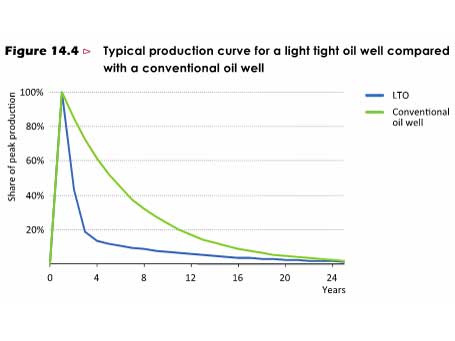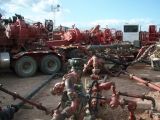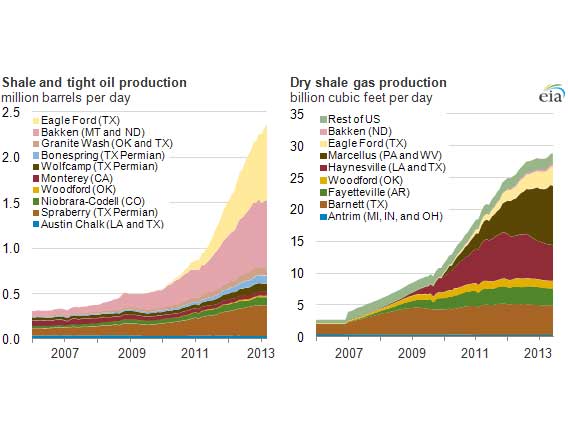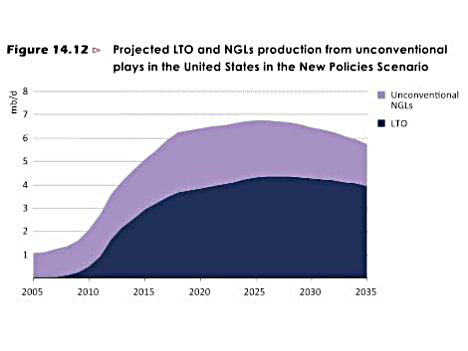The Promise and Perils of Fracking
9 Jan 2014
By Giacomo Luciani for ISN
The energy security potential of hydraulic fracturing continues to receive a significant amount of coverage, most notably in the United States and Europe. Yet the phenomenon also known as fracking is by no means a new technique for extracting hard to get natural resources: it has been in use in oil production since 1949. What is new, however, is the combination of fracking with horizontal drilling and – even more importantly – the increase in the price of oil over the past decade. This has turned prospects that were previously considered non-commercial into profitable opportunities.
The art of fracking
Understanding fracking requires a short introduction on the geology of hydrocarbons. Oil and gas is formed out of ancient organic material accumulated in sedimentary basins. If appropriate pressure and temperature conditions exist, organic material in the source rock decays and turns into either liquid or gaseous hydrocarbons. Once formed, hydrocarbon molecules will tend to escape from the source rock and migrate towards the surface, percolating through porous rock. If they meet a layer of rock that is not porous (a cap rock) they may accumulate in the porous rock beneath this layer. This is how a conventional oil or gas field is formed.
But it is also possible that the hydrocarbon molecules are trapped in a rock that is not porous, such as shale or other tight formations. In a conventional oil and gas field, drilling a well into the formation allows oil and gas to enter the well and escape towards the surface. Because the rock is porous, oil and gas will be free to travel through the rock into the well. But if the rock is not porous, or has limited porosity, oil and gas contained in the rock surrounding the well will not be free to travel to the well. Hence the well will have little or no productivity. Hydraulic fracturing is a technique whereby large volumes of water are injected into the well at high pressure to fracture the rock, and in this way increase its permeability, allowing oil and gas to flow into the well.
It is the pragmatic combination of horizontal drilling and fracking into tight (i.e. non porous) formations that has led to the major increase in the United States of production of shale gas first, and shale oil thereafter. The increase in production has been little short of spectacular, as shown in the following charts from the external pageEnergy Information Administrationcall_made (EIA).
Initially, the attention of US producers focused on tight gas and on the Haynesville and Marcellus formations. The dramatic increase in production led to a collapse in prices on the Henry Hub, the main location for gas trading in the United States. Consequently, drilling for gas has become unprofitable unless the productivity that can be achieved is very high, and drilling rigs have been shifted from formations containing mainly dry gas to formations containing oil (and, as is always the case, some associated gas). Thus starting in 2010-11, it is the production of tight oil from the Bakken and Eagle Ford formations that has increased dramatically, while the production of tight gas has slowed down.
For how long will such rapid increase in production continue?
Estimates differ widely in this respect. The following chart from the EIA suggests that tight oil production will peak by the end of the current decade then gently decline.
By contrast, the International Energy Agency’s World Energy Outlook 2014 predicts a somewhat later peak, about the middle of the next decade.
The major difficulty in assessing the prospects of tight oil and gas production is related to the fact that we cannot assume that hydrocarbons are uniformly distributed in the rock formation, because the latter is not porous. We know the extent of the formations, and we know how prolific wells are that have been drilled so far, but we cannot with certainty extrapolate historical results to the whole formation. Surprises are possible in both directions.
It should also be considered that wells drilled in tight formations have a very rapid decline rate, much more rapid than wells in conventional oil and gas deposits. The decline rate is of the order of 40% in the first year and around 90% after four years (as shown in the next figure). The bottom line is that maintaining production requires constant drilling of new wells – and increasing production even more so. Exploiting tight oil and gas is, therefore, a labor and machinery-intensive process, more akin to manufacturing than to mining in its economic profile.

America leads, others follow
There are good reasons why the extraordinary increase in tight oil and gas production has taken place in the United States, and why it is lagging in the rest of the world. First, in the United States the owner of the land is also owner of the subsoil resources. Oil and gas producers need to obtain a license from the owner of the land, who is generally a farmer and quite happy to have an additional stream of income. This, in turn, reflects that tight oil and gas development in the United States has largely taken place in sparsely populated areas, with limited encroachment upon urban settings.
Second, the oil services industry is enormously developed in the United States, with a very large number of drilling rigs available, much in excess of what is available in the rest of the world. Finally, the US oil industry includes many small operators, companies that are very nimble and carry limited overhead costs. Such outfits can, therefore, squeeze a profit out of challenging opportunities.
Significant tight oil and gas formations exist in many other parts of the world, but institutional and industrial conditions are not as favorable as in the United States, and development lags behind. It is to be expected that rules will eventually be put in place and industrial conditions created to exploit many of these formations, although in some cases environmental circumstances may be challenging. This is especially true of China, where large shale gas deposits are far from sources of water needed for fracking.
Consequences
For the time being at least, the main consequence of the “fracking revolution” is that concern about “peak oil” has at least receded, and a clear impact on prices is visible. US tight oil is reckoned to remain viable as long as international oil prices remain above 80 or 90 dollars per barrel. Because of the rapid decline rate and need for continuous drilling, the production of tight oil may be expected to be price-elastic - while the production of conventional oil is notoriously rigid relative to price changes. This means that a decline in prices would immediately be followed by a slow down, then a decline in production. US tight oil may be viewed today as the global marginal oil, which determines global price levels. As prices are still well above the cost of production of US tight oil, production increases rapidly and will continue to do so until either a physical limit to availability is reached, or prices decline. I expect prices, rather than physical availability, to be the moderating factor in the end.
Low oil and gas prices change the equation between hydrocarbons and renewables. It was expected that hydrocarbons would become increasingly expensive, and greater reliance on renewable sources would become an economic necessity. It is now clear that this is not the case, and renewable sources will remain considerably more expensive than hydrocarbons or coal. This means that reaching an agreement concerning the distribution of the economic burden for decarbonization will be much more difficult.
Concerns
There are of course other environmental concerns related to fracking, beyond the implied impact on greenhouse gas (GHG) emissions and global warming. In early instances of implementation of the technique, proper process was not always followed, or relatively shallow formations were fractured, leading to interference with water resources for human consumption. The fear of water contamination has largely receded, primarily because much deeper formations are now targeted, and no contact with water resources in human use is possible.
Rather, concerns are increasingly being voiced with respect to induced telluric movements. For example, the increased number and intensity of earthquakes recorded in Oklahoma was recently featured in the press. So far, only material damage has been recorded, but obviously this may be a source of concern for the inhabitants of the regions involved.
More generally, fracking is just not a desirable neighbor: it requires heavy truck traffic, noisy operations, and definitely leaves a mark in the landscape. Thus it is certainly to be expected that in densely populated regions there will be some popular resistance to it. In this, however, fracking is certainly not unique. The reader can easily access photos of lignite (brown coal) mining operations in Germany or Poland, and will conclude that they are far from scenic. Nevertheless, these activities are tolerated in densely inhabited and environmentally conscious Europe – indeed the use of brown coal for power generation is increasing in Germany, with negative consequences for GHG emissions.
Public attitudes towards fracking are very negative in some European countries, but certainly not all of them. In the UK, the government has just opened an area equal to two-thirds the size of England to fracking. There will be popular protests, but in a country that increasingly suffers from energy poverty, preference for cheap energy will prevail. Differences of opinion at both national and regional levels nevertheless suggest that the jury remains out in parts of the developed world as to whether fracking really offers the best hope for long-term energy security.
Giacomo Luciani is Adjunct Professor at the Graduate Institute, Scientific Director of the Master in International Energy, Paris School of International Affairs at Sciences-Po (Paris), a Princeton University Global Scholar - teaching at the Woodrow Wilson School and the Department of Near Eastern Studies - and Senior Advisor to the Gulf Research Center.
For additional reading on this topic please see:
Fracking for Shale Gas in South Africa: Blessing or Curse
The Shale Gas and Tight Oil Boom: US States’ Economic Gains and Vulnerabilities
The Strategic Dimensions of the Shale Gas Revolution: Shared Views from NATO and Gulf Countries
For additional reading on this topic please see this mini Dossier:




